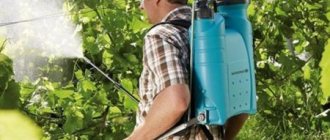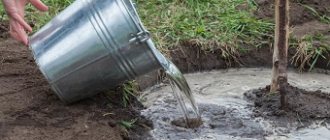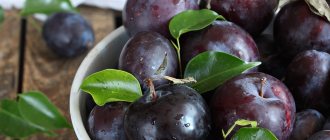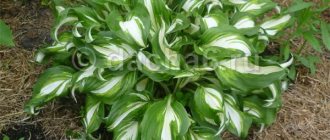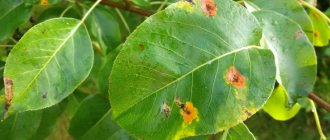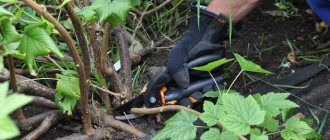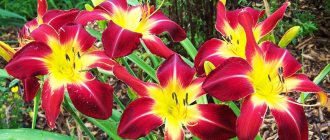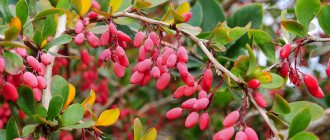The apple tree, like the pear tree, is a genus of fruit-bearing trees and belongs to the Rosaceae family. Wild apple trees, known since ancient times, formed the basis for the selection of modern varieties.
Modern trees differ from each other in size (from shrub forms to trees 15 m tall), timing of flowering and fruiting, taste of the fruit, resistance to diseases and weather conditions. A developed root system can grow up to 2.5 m deep.
The following types of apple trees are distinguished according to the time of fruit ripening:
- Summer - ripen in July, have poor keeping quality of fruits;
- Autumn - second ten days of September, stored until mid-winter;
- Winter ones - ripen at the end of autumn and are stored until next summer.
Optimal watering frequency
First of all, when watering a garden, a responsible gardener should pay attention to how deeply the soil is moistened.
In order to make sure that the procedure was performed correctly, take a stick 15 cm or more long with a ribbed surface. Press this stick into the soil and check what is the optimal volume of irrigation liquid for each specific area. The length of the stick that will be covered with dirt will show how deeply the water penetrates when watering. There is also a standard watering regime for seed orchards:
- The first time water is added 15 days after the tree blooms;
- The second time irrigation is carried out when the active growth of young apples begins;
- the third time you need to add liquid, when buds appear on the shoots formed in the current season;
- the fourth portion of water will be required by the trees after harvesting from summer varieties of fruit trees or when winter varieties ripen;
- and the last time you need to irrigate the plantings is after the leaves fall.
It is impossible to add water during active flowering or immediately after its completion, since excess moisture can adversely affect the number of fruits set and lead to the formation of mold or rot.
If your garden is located in the steppe zone or the spring was too dry, then the lack of moisture in the soil will lead to a meager harvest in the fall.
During the hot and dry summer period, apple trees may need additional moisture. So add two or three extra pumps of water.
When to water apple tree plantings in the summer:
- You need to add water once or twice at the end of June or during July.
- You can water the trees once when their fruits begin to swell and are just beginning to color.
When to water the crop
How to water apple trees? If you are a beginner gardener, then proceed with this procedure by adhering to the following schedule:
- trees are not watered in winter;
- with the onset of spring, the first moistening is carried out during flowering, as a rule, this time falls in mid-May;
- the next watering is carried out after the entire ovary has fallen off; in time, this procedure falls in mid-June;
- the third time for moistening is performed at the end of July, at which time summer varieties of apples begin to ripen;
- with the onset of autumn, at least 3 weeks before harvesting, the soil is watered again along the entire perimeter of the crown.
You can water the apple tree in the autumn only if the weather is dry and no precipitation is expected in the near future. At the same time, it is worth highlighting that if you have a vigorous crop growing in your garden, then make sure that the soil is saturated with water to a depth of at least 30 cm.
Well, to keep the moisture as long as possible, mulch the tree trunk circle with straw, sawdust or hay. It is desirable that the layer thickness be at least 5 cm.
If you have dwarf apple tree varieties growing on your site, then double the amount of moisture, but do not water such apple trees abundantly.
Is it necessary to add water to apple tree seedlings after planting?
The first irrigation of the plantings must be done on the same day on which you complete the planting process.
If there are difficulties with sufficient moisture, then you can wait a little, but watering still needs to be done within 25–30 hours after planting the seedlings. If you planted plants in the spring, and it turned out to be damp and dirty, then reduce the volume of water added to a minimum (no more than 7 liters per seedling when planting).
In the first summer of active growth of the tree, it needs to be watered 3–5 more times. The exact amount of watering is difficult to calculate, since it is related to the composition of the soil in each specific area, as well as how the soil was prepared for planting (whether the planting hole was prepared in advance, the soil was loosened, fertilized, etc.). Also, do not forget about the features of the area:
- If apple trees grow in areas that rarely experience prolonged periods of heat, then irrigation is carried out three times.
- If the site is dominated by sandy soils, the area is constantly blown by winds, and the summer period is usually dry and very hot, then five waterings during the summer season will not be enough. In such conditions, it is necessary to carry out a second irrigation 25 days after the first, if there was enough rain, and after two weeks if the spring period was dry.
- The fifth time water is applied to the seedlings in August, if the days are too hot and clear.
At times, dry autumn often prevails in steppe regions. If this happens, then you need to water the plantings, and then remove all unripe ends of the shoots.
During abnormal heat, annual apple trees need to be watered at least once every ten days until the heat goes away. Watering is carried out in a ring ditch, the depth of which reaches 15 cm (it is located a meter from the trunk of the fruit tree).
The volume of applied liquid should be 7–15 liters for loamy and chernozem soils and 17–20 liters for sandy substrates.
General rules for watering trees
Watering different crops, trees and bushes has its own distinctive recommendations. But there are several general rules that will help you navigate when the specifics of cultivation are unknown. They make life easier for gardeners who can only go to their dacha on weekends.
General rules for watering fruit trees include:
- Oxygen-enriched water from open reservoirs should be warm;
- Watering is carried out only at the root of the plant;
- After watering, be sure to sprinkle the soil with dry soil for better moisture retention;
- The best time for watering is in the morning before 12 o'clock or in the evening after 6-7 o'clock.
- After the procedure, be sure to loosen the soil by 5-7 cm;
- The soil must be spilled; you can check it with any stick by piercing it 15 cm. Penetration of moisture to a depth of 0.8 cm is required;
- You cannot water plants before cold weather, as they require less moisture and increase the risk of disease;
- The main time for watering is late spring (May) - early summer (until mid-July);
- The frequency depends on the weather; if it rains constantly, reduce the number of waterings.
The rate of watering for an apple tree depends on the age and size of the tree. The younger it is, the less often it needs to be watered. Up to 3-4 years, add up to 5-6 buckets per watering. For adult fruit-bearing apple trees, up to 100 liters per 1 square meter is required. m.
Apple tree care by month
To learn more
How to water apple trees in a drip system
The most common method of watering dwarf and palmetto apple trees in gardens. It works great because it moistens the soil directly under the root system of each tree:
- When watering using the drip method, you should use only filtered water to avoid clogging the droppers with various debris or the appearance of sediment.
- The speed of liquid flow during such irrigation can be adjusted depending on needs: you can organize slow penetration of water into the substrate or completely open the line to quickly saturate the plantings with moisture.
- The liquid (which is deepened into the ground) comes from the feeder tank under low pressure, then goes through the main pipe, along the hose and goes directly into the dropper.
- Irrigation hoses are usually installed in new gardens at a distance of 50–95 cm from the trunks. A distance of 2 meters is maintained between rows of sleeves.
- Since trees require more and more water as they grow, and their root system becomes more extensive, every 5–8 years a new hose is stretched from the other side, at the end of which a second dripper is installed and 50 cm from the base of the tree.
Rules for watering apple trees
Most gardeners believe that apple trees need little water and frequent watering. In fact, this approach may do more harm to the culture than good. In order for a tree to delight you with abundant harvests, you need to adhere to a few simple rules, namely:
- Apple tree seedlings are watered no more than 3 times during the entire growing season. In this case, at least 2 buckets of warm, settled water should be poured under each seedling.
- When watering, you need to make sure that water gets to the root collar, so that the root will receive full moisture.
- Seedlings under 3 years old are watered in the planting hole.
- To properly moisten an adult apple tree, grooves are made around the trunk circle, up to 25 cm deep.
With the onset of autumn, this crop begins intensive growth of its root system. Therefore, if autumn turns out to be poor in precipitation, then you should organize another watering, which experienced gardeners call moisture-charging.
This procedure is carried out at a time when the trees shed all their foliage. Autumn watering will help you nourish the crop and in this way protect it from the cold winter with severe frosts.
Important! Moistening is not carried out in late autumn, since the tree will not have time to prepare for the hibernation period, and as a result it may die.
If you have an adult tree growing in your front garden, then it needs to organize about 5 waterings over the entire growing season. It is worth noting that the exact amount of humidification directly depends on the region of residence. If your climate is characterized by high humidity, then the amount of watering is reduced and vice versa.
Principles of irrigating apple trees at different times of the year
The irrigation regime for apple trees changes depending on the established season in the yard.
Spring irrigation: nuances
In most regions, spring is accompanied by heavy rains, so additional watering will be harmful even for apple trees.
But if the garden is located in a region where the weather is dry and hot for most of the warm seasons, then you need to water before the trees begin to bloom. It is best to irrigate the plantings when the buds begin to separate from the inflorescences. If the heat sets in at the moment when flowers begin to bloom on the trees and the soil is dry, then closer to dusk you need to water the entire garden along the furrows or pour at least 5 buckets onto each adult tree.
The most unacceptable methods of watering are sprinkling and irrigating over the ground with a hose.
Do I need to water apple trees during active flowering? This question is usually asked by beginners in gardening. If the soil under the apple tree is moist enough, it is prohibited to add additional liquid during this period. However, if the air is too dry and there is not enough moving water in the root system area, you need to water the plantings.
Summer watering
At this time, it is especially important to monitor the degree of soil moisture in the garden. This is especially true for those who grow apple trees in hot and dry regions:
- Irrigation plays a big role in the first half of the summer season immediately after the ovaries fall (this is approximately the middle or second half of June). At this time, the first part of the liquid is added.
- The plantings are watered a second time after about 14–20 days. However, if the weather is dry outside and the sun is hot every day, then the frequency of irrigation needs to be increased (but without changing the volume of liquid applied).
Usually, if the summer is not so hot in August (for example, in the regions of the middle zone), then the apple trees are not watered at this time, so as not to give them the opportunity to begin secondary growth of branches that may die in winter.
It is permissible to add liquid in August only if there is abnormal heat outside. In this case, you need to water the plants in the holes or furrows.
Autumn irrigation
It is not worth pouring water excessively in the autumn, especially if the plantings are already significantly moistened by frequent rains.
You need to be especially careful about irrigation in September, when the weather is warm outside. Excessive moisture can lead to the tree entering a phase of active vegetative growth, and its shoots will not have time to accumulate a sufficient amount of sugars, which in a frosty winter will lead to freezing and death of all plantings.
How can you feed a tree during watering?
In order for the apple tree to be healthy and strong, and the soil under it not to be depleted, it is necessary to regularly apply fertilizers. Plants best absorb those fertilizers that come to them in liquid form, so it is recommended to feed the trees during watering. What exactly will bring the greatest benefit to the apple tree?
Everyone knows that apples are rich in iron; in addition, the presence of iron in the soil in accessible compounds protects plants from chlorosis. So when watering, you can add iron sulfate , but in a strictly defined dosage and this cannot be done annually. The use of iron sulfate will also have a good preventive effect, protecting the apple tree from fungal diseases. It is better to use it at the end of the season. But in the spring, you can treat the apple tree with copper sulfate , but only by spraying; it is not recommended to use it when watering. And when sprayed, it has a positive effect on the tree’s immunity and protects against the invasion of harmful insects. When watering an apple tree, you can add bird droppings , which is a very effective organic fertilizer. Fill it with water in the recommended dosage, leave for several days, and then water the soil in the circle around the trunk (for an apple tree in the first year of planting, one bucket will be enough, for an adult tree - no more than three buckets). Do not forget that fertilization is combined with watering, that is, after bird droppings, you will need to pour the remaining amount of water into the tree trunk circle.
Do not pour water that remains after washing dishes under trees. Soapy water will be useful to the apple tree only if dyes and harmful additives were not used in the production of soap.
Yeast is often used as a fertilizer , but in the case of apple trees such solutions are not suitable for watering. However, they can be used to spray a fruit tree, as this will help cope with various diseases (rot, rust). Many people recommend manganese solution as a method of soil disinfection. This method is not suitable for apple trees, since such a solution increases the acidity level of the soil, and apple trees do not tolerate acidic soil.
Principles of watering apple tree plantings in hot weather
Prolonged heat is dangerous even for the strongest fruit trees, and especially for apple trees.
So if the region experiences abnormally hot weather, then you need to take care of additional irrigation of the plantings. Typically, watering fruit plantings is divided into two parts:
- the first half is poured into the furrows until absorption stops;
- the second part should be poured over the shoots or in a layer 1.5 meters from the ground, this will help nourish the entire area of the substrate, enveloped by the roots.
It is best to irrigate at sunset. If there are not many plants and there are no watering systems, then the volume of liquid for each apple tree will be as follows:
- for trees up to 35 years old - 40 liters of water;
- for trees over 35 years old - 45–50 liters of water.
In the early morning, the procedure must be repeated, adding the same volumes of liquid to each planting. In this case, you need to pour water into a hole under the crown, the depth of which is 25 cm.
How often to water
The volume largely depends on the age of the plants, but there are other factors that influence this indicator. Trees planted in clay soil require the most water.
The seedling is watered with 3 buckets. Apple tree under 5 years of age – 6-8. With proper care, the tree actively develops and grows. An adult fruit-bearing apple tree requires at least 12 buckets of water. In the tree trunk circle, the soil should be saturated to 70-80 cm.
For a tree older than 10 years, you need to dig a groove under the crown and pour 3-4 buckets of water into each quarter. Then the tree will delight the owner with a harvest for up to 35 years and even more.
Is it allowed to water apple tree plantings with various preparations?
Many gardeners, in pursuit of a rich harvest, decide to water their plantings with third-party preparations, for example, copper or iron sulfate, organic fertilizers and other compounds. But such experiments do not always end successfully.
Use of iron sulfate
On the Internet and in specialized literature you can find a lot of advice from “academics” who recommend watering apple tree plantings with iron sulfate.
This is done ostensibly for the purpose of preventing or treating chlorosis. You need to dissolve a handful of iron sulfate in a bucket of water and pour this mixture over the area after the apple tree has shed all its leaves. Such “specialists” recommend carrying out the procedure once every three years. However, you should not blindly believe such advisers. Iron is a highly mobile metal, so before spring it will have time to combine so that the apple tree roots will no longer be able to absorb it. But an inexperienced gardener can easily upset the nutritional balance in the root zone with such an experiment. There is no point in fighting chlorosis in this way.
Irrigation with copper sulfate
Here the situation is approximately the same as with iron sulfate.
Fruit trees cannot be watered with this mixture, since an excess of copper can activate mutations and degeneration of various parts of the fruit (in particular, apples). Deformations can be very different: from the formation of inedible areas in apples to shoot cancer. Copper starvation should be treated only with special supplements, which are a 0.1% solution of aqueous copper sulfite. The leaves of crops are sprayed with it from May to July.
Is it allowed to water apple trees with water from a well?
In principle, watering fruit crops (including apple trees) with water from a stream, well or garden well is permitted.
The main thing is to know the exact volume of liquid that each tree needs. However, you need to carefully monitor the water temperature. If it is close to the freezing point, then such water cannot be applied to the plants. If the water temperature is +4...+6 degrees, then this, of course, is not particularly good, but it is better to water the plantings with such water than to leave them, for example, in a drought, completely without moisture. Just do not water branches and trunks with such liquid. Only pour water into soil grooves and ditches between 10 pm and 7 am.
Is it possible to use water from a septic tank?
Any viruses, harmful microorganisms, bacteria and worms in standard septic tanks do not die without special preparations or thorough steaming of the mass.
So, watering fruits or hands with water from such reservoirs leads to unpleasant consequences. It is allowed to introduce the liquid fraction only between the rows of plantings in the trench in the autumn before the snow falls. This is one of the fertilizer options.
Adding organic matter (chicken manure)
Watering with a solution of chicken manure is allowed, but you need to act with extreme caution. Too concentrated organic fertilizer can easily burn trees. In order to prevent burns from occurring, you need to dissolve one bucket of litter in 10–15 buckets of cold water, mix the mixture and let it sit for 24–48 hours. Then such fertilizer can be applied to the tree trunk circle in a bucket, but only under the fruit-bearing tree. For young plantings, you can add a third of a bucket.
Soap solution
It is allowed to apply a solution of fatty soap under planting.
Mixtures of ordinary soap remnants, liquid soap residues and other products contain large amounts of parabens and other harmful compounds. Essentially, these are simple slops. So such mixtures can be dangerous for living creatures in the soil. Not only harmful bacteria will die, but also various beetles and worms that benefit the plantings.
Uses of manganese
It is allowed to add only a weak solution of manganese to the soil in order to prevent the appearance of pests and diseases and disinfect the soil.
Sometimes this mixture is used to kill earthworms that threaten the health of apple tree roots. However, in large quantities and in high concentrations, such a product can destroy many useful substances in the substrate, so such a composition is not used when watering apple trees.
Is it possible to make yeast mixtures?
There are no mixtures prepared from a dry composition or mass from a pack.
Such formulations can only be effective in the presence of sugars (the sweeter the better). Where can you find sweet soil on the site? That is why gardeners most often introduce fermented sediments from wine, kvass, and beer into the soil, which are diluted with water. For open substrate this is useless. The maximum where such a procedure can work is in greenhouses or greenhouses, as well as containers, and then only in the format of tray yeast sediments.
Watering with boiling water
Do you want to kill your apple trees? Then watering with boiling water is the best solution. Not a single living tree or bush can survive the application of liquid whose temperature is 50 degrees or more. So you shouldn’t experiment with your apple tree plantings.
What kind of water should you water apple trees with?
When watering an apple tree, you will need warm water only in the first weeks after planting the seedling; in the future, the stronger tree will tolerate watering the apple tree with cold water (the main thing is that its temperature is above 0). But just in case, remember that many plants perceive watering with ice water as frost and can stop their growth or even get sick, so it’s better not to use too cold water. You can use water from a well, water supply or well on your site, you just need to first make sure that there are no harmful impurities in it, because everything that your apple tree absorbs can later be found in its fruits.
Water can be poured into the tree trunk circle, into specially prepared holes or ditches, and you can also use the sprinkling method. This is not a fundamental issue; it is only important that the soil gets wet deep enough, at least 60-70 cm.
What should be added to water to feed trees?
To make the tree develop faster and more actively, various minerals and nutrients can be added to the water. It is worth remembering the features of some of them:
- Soapy water. Used if harmful insects and bacteria are found in the soil. A soap solution will help get rid of them.
- Copper sulfate. It is not recommended to use copper sulfate to water the apple tree, as it can lead to degeneration. It is allowed to spray in spring.
- Chicken droppings. One of the best organic fertilizers, which contains a lot of useful substances. To prepare it, you need to mix a bucket of manure with a bucket of water and infuse this solution for 24 hours.
- Inkstone. It can be used no more than once every few years. Iron sulfate helps protect the tree from fungus and chlorosis and nourishes the fruit with the necessary elements.
- Boiling water. Watering with water at temperatures above +50 degrees will cause the root system to die.
- Yeast. You can use fermented wine or kvass. However, such a solution is not used for watering, but for spraying tree leaves. It helps the fruits become even sweeter.
Spraying with yeast solution
Watering cherries
Cherry plants have a number of specific characteristics that should be taken into account when irrigating. These features directly depend on the stage of development, climatic conditions and a number of other factors.
Cherry seedlings
You can get a good harvest only by knowing how to properly water cherry seedlings. The first time this must be done immediately after planting in the spring or autumn, by digging a small circular ditch and pouring 2-3 buckets of water into it, or by organizing drip watering of the cherries. After the water has soaked into the soil, you need to compact the soil a little to retain moisture. It is very important to carry out this procedure immediately a few hours after planting, otherwise the plant may die or grow weak and infertile.
Watering cherries is required only if the top layer of soil dries out and may stop altogether during heavy seasonal rainfall. In dry times, the plant requires more moisture and with each irrigation it is necessary to consume 10-15 liters of warm water, which has settled in a tank or barrel. Experts recommend watering in the evening, closer to sunset.
Cherry 2-5 years
At this stage of development, cherries are less demanding and do not need spring and summer irrigation, except during periods of extreme heat, drought or regular drying out of the soil. Lack of moisture during fruit filling can cause fruit cracking.
Cherry 5-15 years
At this age, cherries become even less demanding and require irrigation only during flowering or during a fairly dry period. However, at this stage of development, autumn watering takes on special importance, which must be carried out after leaf fall. Irrigate daily for a week with a water consumption of about 2 liters.
These actions will lead to improved preparation of the cherry tree for the winter and will protect the root system from frost, which is extremely negative for stone fruit crops.
Mature cherry over 15 years old
A mature cherry tree that is more than 15 years old requires combining irrigation with mineral fertilizers. To do this, you can install a drip irrigation system for cherries in the area near the tree trunk and dig small holes no more than a quarter of a meter deep, where you need to pour nutrients and cover them with soil. After this, thanks to the uniform supply of water, the soil is moistened and nourishes the tree.
High-quality and regular watering ensures the longevity and health of the tree, its appearance, and the resulting harvest. To do this, it is enough to buy drip irrigation for trees and shrubs from , and entrust all the concerns related to irrigation to it. The system has proven its superiority over other methods many times and is becoming more popular every year. It is this method of irrigation that ensures the supply of moisture to plants during critical periods of growth and development in the required quantities.
Do I need to prune an apple tree seedling when planting?
The roots of seedlings with minor damage are cut with pruning shears to a healthy place. The cuts should be smooth and as small as possible. It is not recommended to update sections of healthy roots (made during digging), especially if callus has formed on them. You should also not shorten healthy roots unless they are too long or intertwined. Important: plants with a strong, healthy, branched root system take root better.
During transportation and pre-planting storage, the roots must be protected from drying out. To do this, they are buried in soil and covered with damp moss or burlap. Before planting seedlings in the spring in dry weather, they are placed with their roots in water for several hours.
WHEN IS IT BETTER TO PLANT APPLE TREES: SPRING OR AUTUMN?
The timing of planting seedlings depends on climatic conditions. Fruit trees are planted in open ground , usually in early spring before buds open or in the fall after growth has finished.
Spring planting is relevant primarily for the North. In winter there are severe frosts, and the roots of seedlings planted in the spring often freeze. Plants die. In spring, planting begins early, trying to do it within 7-8 days.
In Siberia and the Urals, in conditions where the snow cover is insufficient and there is no risk of spring dry winds, it is better to plant fruit tree seedlings in the spring. Where the snow cover is thick and dry winds are frequent in spring, you should prefer autumn planting.
In the central regions, in central Russia, winters are less severe, with heavy snow cover. In such conditions, fruit tree seedlings can be planted in the fall, but no later than 20-25 days before the onset of stable frosts. Otherwise, the young trees will freeze and die. However, it is recommended to plant cherries, plums, apricots, and pears only in spring. Apple trees are not included in this list.
In regions of Russia with relatively warm autumns and mild winters, a more comfortable time for planting is autumn. Trees planted in the fall have time to sprout new roots, and in early spring they quickly begin to grow. However, in the southern regions, planting in spring is not so favorable, because spring comes quickly there, and plants often die due to lack of moisture.
The autumn planting period for apple trees and other fruit trees in the central regions is from September 25 to October 20. In the southern regions, autumn planting is favorable from half of October to half of November.
Organization of watering seedlings
Young, newly planted apple trees are moistened in a slightly different way, namely:
- The first watering is carried out at the time of planting. After planting, apple trees can also be moistened during the day.
- The next moistening of the planting material is carried out in mid-May.
- Apple trees are watered at least 3 times in the summer, provided that the region of residence is not characterized by dry weather.
- If the soil in your front garden is sandy, and the summer period is characterized by hot weather, then the amount of moisture is increased up to 5 times.
Important! If spring is generous with precipitation and there is mud during planting of an apple tree seedling, then the amount of water poured into the hole should not exceed 10 liters.
As for the autumn period, if the weather is dry outside, then at least a month before the onset of the first frost, the seedling should be given a good drink of water. Thanks to such care, your tree will winter well.
Another important point that many novice gardeners are interested in is whether it is possible to moisten seedlings abundantly and how much water a young tree needs at one time. As a rule, watering apple trees in the spring involves adding 15 liters of warm, settled water at a time.
As for moistening the apple tree in summer, for sandstones it is advisable to increase the volume to 20 liters at a time, and for chernozem the amount is left unchanged at 15 liters.
Spring watering
How to water apple trees in spring? First of all, it should be noted that how the root system is nourished depends on spring watering. In addition, with proper moisture, you can count on a bountiful harvest. Therefore, this procedure should be taken as responsibly as possible.
As a rule, the first spring watering is carried out during the flowering period. Moreover, in some cases, the crop is moistened earlier, in mid-April, if the winter was snowless and there was very little precipitation in the spring. It is also worth noting that after you moisten the crop, it would be useful to add additional fertilizer.
In general, if you are not sure about the need to water the apple tree, then you can check the condition of the soil by first digging a small hole. If the soil is dry more than 10 cm, then the tree needs moisture.
Moisturize properly in the hot summer
Summer and hot days are quite dangerous for apple crops; for this reason, watering apple trees at this time of year is divided into two parts. This is done as follows: half of the water is poured into previously prepared grooves, and the second part is sprayed on the branches. It should be remembered that this procedure should be performed at sunset and after flowering.
Important! The root collar of the apple tree should be located above the soil level. At the same time, you should not allow it to become damp, otherwise the tree may begin to rot.
As for the amount of water for such an event, the approximate calculation is as follows:
- apple trees that are up to 30 years old need 35 liters;
- those crops that require 45 liters over 30 years.
By thus moistening the tree in hot weather, you will help the crop to withstand the heat, thanks to which it will definitely please you with a good harvest.
Watering apple trees in autumn
How often to water apple trees in autumn? With the arrival of autumn, this crop practically does not need additional moisture. As a rule, at this time of year there is a large amount of precipitation, due to which there is no need for self-irrigation.
It is worth noting that if the autumn turns out to be dry, then the root system will need to be saturated with moisture. This procedure is performed taking into account the following features:
- In September, it is not recommended to water the tree, otherwise the crop may enter a state of active vegetative growth, as a result, the plant will not prepare for winter and may die.
- As soon as the tree sheds its leaves, you can start moisturizing. As a rule, this time falls in mid-October. In this case, an adult tree will need at least 10 buckets of warm and settled water.
Autumn moisture helps protect the crop from drying out and freezing. Therefore, performing such a procedure is just as important as in the spring.
Separately, it is worth highlighting one important point: if an apple tree is planted in the fall, then abundant moisture should be mandatory. In this case, at least 60 liters of warm, settled water will be required per hole. This rule also applies to pears.
And in conclusion, it is worth noting that a planted apple orchard will definitely thank you with delicious fruits if you organize watering correctly. After all, this part of care is no less important than fertilizing, pruning and controlling parasites. Moreover, those gardeners who do not ignore watering receive a huge advantage in the form of a healthy tree and good harvests.
